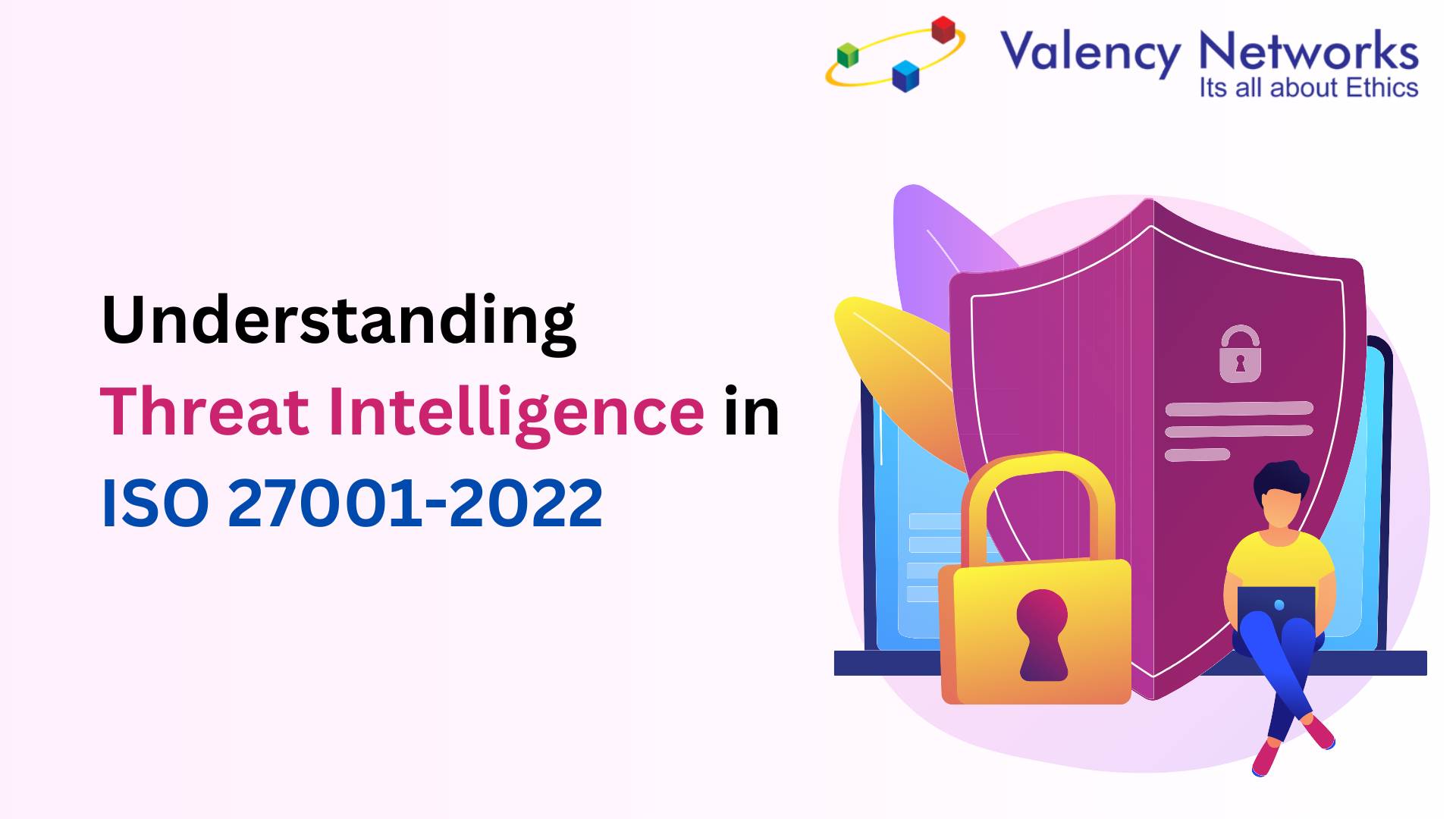- DORA Compliance – A Complete Guide by Valency Networks - 31/01/2025
- Is ICMP Timestamp Request Vulnerability worth considering - 31/12/2024
- Understanding Threat Intelligence in ISO 27001-2022 - 21/11/2024
Understanding Threat Intelligence in ISO 27001:2022
When it comes to cybersecurity, being proactive is always better than being reactive. In fact, ISO 27001:2022 introduces a new control called Threat Intelligence, which is all about understanding the threats that could potentially harm your organization before they do any damage.
Imagine you’re protecting a castle. You can’t wait for an enemy to arrive at your gates to start defending. Instead, you need to gather intelligence—information about potential attackers and their strategies—to ensure you’re ready in advance. This is the essence of threat intelligence in cybersecurity.
What Is Threat Intelligence?
In simple terms, Threat Intelligence means collecting and analyzing information about existing or emerging security threats to help you understand what’s happening in the world of cybersecurity. This helps you take informed actions to prevent attacks, and if they do happen, minimize their impact.
The Layers of Threat Intelligence
Not all threats are the same, and not all intelligence is useful in the same way. Think of threat intelligence like a toolkit that comes with different levels of detail to address different needs:
- Strategic Threat Intelligence: This is like reading a high-level news report about the latest trends in cybersecurity. It tells you things like who is attacking, why they’re attacking, and what new methods they are using. For example, you might learn that a certain group of attackers is targeting financial institutions with ransomware.
- Tactical Threat Intelligence: Now you need to get into the weeds a bit. This level tells you how the attackers are operating—the tools, techniques, and procedures (TTPs) they’re using. This could be information like the specific software vulnerabilities they’re exploiting or the type of phishing emails they’re sending. It’s like knowing how the enemy plans to break into your castle.
- Operational Threat Intelligence: This is the most specific and actionable intelligence. It provides you with real-time details about attacks happening right now, including indicators of compromise (IOCs) such as IP addresses or malware hashes. This is like receiving a warning about an enemy’s movements, so you can act immediately to defend your organization.
What You Need to Do to Implement Threat Intelligence
- Establish a Standard Operating Procedure (SOP):
- Mention the purpose
- Mention how the SOP aligns to the objectives of your org
- Frequency: The threat intelligence process should be continuous. For example:
- Daily: Monitor external sources for new threats or alerts (using some tool).
- Monthly: Review intelligence reports and update risk assessments (Meetings)
- Quarterly: Conduct a full analysis of your threat landscape and adjust security measures accordingly (Meetings of Seniors).
- Roles and Responsibilities:
- CISO/Information Security Team: Lead the threat intelligence efforts, ensuring the process aligns with the overall security strategy.
- IT/Security Operations Team: Implement technical countermeasures based on the threat intelligence (e.g., firewall rules, patch management).
- Risk Management/Compliance Team: Integrate threat intelligence into the overall risk management framework, ensuring it aligns with business goals and compliance needs.
- External Partners or Threat Intelligence Providers: Collaborate with external experts for actionable intelligence (e.g., threat feeds, intelligence sharing).
- Source Identification:
Identify and prioritize internal and external sources for collecting threat intelligence. These can include:- Internal: Network logs, past incidents, employee reports.
- External: Commercial threat intelligence providers, industry groups, government alerts (e.g., CERT).
- Collect and Analyze Data:
- Use automated tools (e.g., SIEM, threat intelligence platforms) to collect data from identified sources.
- Analyze this data to spot patterns and trends—what threats are most likely to impact your organization based on your sector, geography, and attack history.
- Make It Actionable:
Once the intelligence is collected and analyzed, ensure it’s contextual and actionable:- Contextual: The intelligence must be tailored to your organization’s risk environment. For example, if you’re in healthcare, focus on threats related to patient data breaches.
- Actionable: Organize the intelligence in a way that allows your teams to act on it quickly. This might include sending alerts for emerging threats or integrating threat data into your incident response plan.
- Get it validated from 3rd party vendors for accuracy and fullness.
- Integrate into Risk Management:
Incorporate threat intelligence into your risk management processes. This could involve adjusting security priorities, revising risk assessments, or implementing new protective measures based on emerging threats. - Share Threat Intelligence:
Collaboration is key in cybersecurity. Share relevant intelligence with trusted partners, industry groups, or Information Sharing and Analysis Centers (ISACs) to improve your collective defense.
How Does This Control Help Your Organization?
The purpose of this control is to ensure that you have the right awareness of your threat environment. With this information, you can make better decisions about how to defend your organization. Here’s how:
- Stay One Step Ahead: By gathering threat intelligence, you can prevent attacks before they even start. For example, if you know a certain type of malware is spreading across your industry, you can block it early using firewalls or antivirus software.
- Reduce Impact: If an attack does occur, having the right threat intelligence means you can quickly understand what’s happening and take action to reduce the damage. For example, if you know the attack is a specific type of ransomware, you can shut down affected systems immediately.
Why Is Threat Intelligence So Important?
By implementing this control, your organization can be more proactive in identifying potential threats and responsive when an attack occurs. In the fast-paced world of cybersecurity, knowing what’s coming next can make all the difference between a small incident and a major breach.
Threat intelligence helps you reduce risk, enhance your defenses, and ensure that your team is always prepared for whatever the cybercriminals throw your way.

